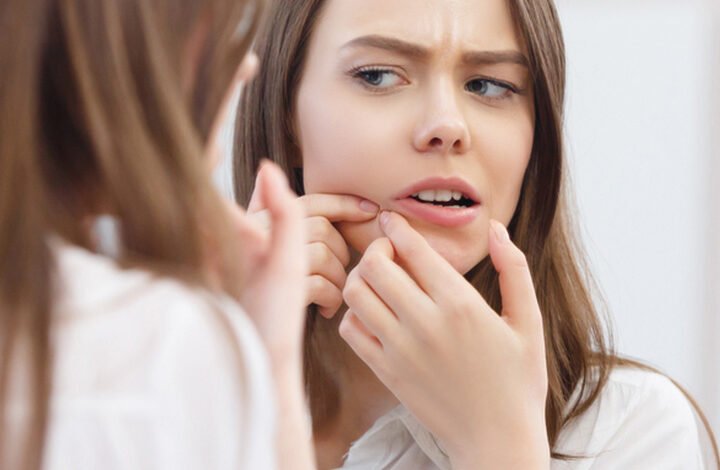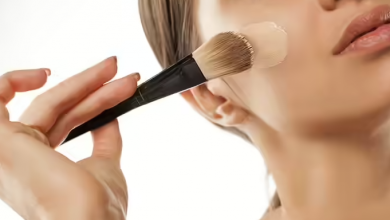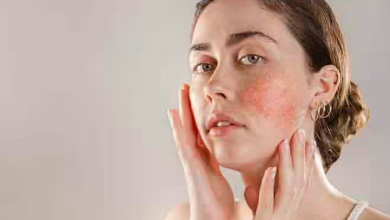Wat is spironolacton? Benefits, dosage and side effects…

Wat is spironolacton?
Spironolactone, also known as Aldactone, is a medication used to treat several conditions, including high blood pressure and fluid retention. Officially, the Meals and Drug Administration has not labeled spironolactone as suitable for treating acne. However, dermatologists often prescribe it off-label to women who suffer from acne breakouts caused by hormonal changes.
Spironolactone belongs to the diuretic class of drugs. It is effective as a treatment for high blood pressure because it removes excess sodium without affecting potassium levels. Excess sodium in the diet leads to higher blood pressure and hypertension.
Wondering how a medication meant to regulate blood pressure can help prevent pimples? Read on to find out.
How does spironolactone work against pimples?
Spironolactone is an anti-androgen. In women, androgen is a hormone that is related to the development of pimples. Spironolactone inhibits the impression of androgen in your body and prevents it from developing pimples.
Androgen is, like testosterone, a hormone that is present in large quantities in men. However, all women also have some amount of androgen. In some women, androgen levels can be higher (due to genetics or hormonal disorders). Spironolactone works by blocking the androgen receptors in the body. This action prevents the androgens from binding to these receptors on your skin, thus preventing pimples.
A randomized controlled trial in 342 adult women with facial acne found that 82% of patients receiving spironolactone reported improvement in pimples, compared to 63% in the placebo group at week 24. In addition, treatment success was significantly higher in the spironolactone group (195) than in the placebo group (9%) at week 12.
Read on to find out if spironolactone is right for you.
Should I use spironolactone for pimples?
Spironolactone can interact with other medications. You should consider this and discuss it with your dermatologist. Spironolactone is also not administered during pregnancy, as it can disrupt the testosterone levels of the fetus.
Women of childbearing age who are prescribed spironolactone for pimples are usually advised to use effective contraception to avoid the risk of birth defects. It is essential that women discuss their reproductive plans with their health care provider when considering spironolactone as an acne treatment.
Diuretics like spironolactone require a significant contribution from the body’s renal system. Therefore, people with kidney disease or kidney problems are advised to avoid the drug. Avoid spironolactone if you are taking potassium supplements or other supplements to stabilize your blood pressure levels (2).
Your dermatologist may prescribe spironolactone if you experience moderate to severe hormonal acne breakouts during your menstrual cycle. Additionally, the medication may also be recommended if your pimples persist despite continued traditional treatments (4).
Spironolactone is never the first resort for treating pimples because of its limited application. Anecdotal evidence suggests that spironolactone may be more effective in adult women than in teenage women or men. In addition, you can only get the drug if you have a prescription from your doctor. The drug is not available without a prescription.
Your doctor will recommend the right way to use it. We have discussed it briefly below.

Instructions
Spironolactone is not applied topically, but taken orally. It is available in tablet and liquid form.
The most common dosage of spironolactone prescribed by dermatologists is between 50 mg and 100 mg per day. However, previous studies have recommended starting with an initial dosage of 25 mg and building up over a few weeks to what your doctor considers a target dosage. Every patient has a different level of hormone imbalance and only your doctor can determine the right dosage for you (4).
Dermatologists may also prescribe spironolactone in combination with oral contraceptives or topical acne treatments. While spironolactone works to reduce acne formation, the topical treatment may suppress pimples that already exist.
How long should you use spironolactone to treat your pimples?
How long should you use spironolactone to treat pimples?
Spironolactone
will never show immediate results. In fact, you will have to wait at least a few weeks before you see a noticeable decrease in skin oiliness and pimples. In most studies, spironolactone showed significant improvements in twelve weeks (4).
Your doctor will determine how long you should continue taking the medication. The impression of it depends on an individual’s physiology and comorbidities. Depending on how your body responds to the medication, you may continue taking it for a few days to a few months.
Read on to learn more about the benefits of spironolactone.
Other Benefits of Taking Spironolactone
Besides treating pimples, spironolactone has a few other benefits. We have discussed them below.
- Skin treatments can be expensive, especially those caused by hormonal imbalances in women. Spironolactone is a cheaper alternative for treating skin problems associated with hormonal imbalances (costing less than $28 per month).
- A major drawback of most oral medications for hormonal disorders is that you cannot take them without food. However, you can take spironolactone with or without food, making it easier to use.
- Spironolactone is beneficial for people with heart disease. In one study, participants taking spironolactone had a lower risk of dying from heart disease. In addition, spironolactone was also effective in reducing the risk of hospitalization for heart-related problems.
Spironolactone is sometimes prescribed to women with polycystic ovary syndrome (PCOS), who suffer from pimples due to the hormonal imbalances associated with the condition. By addressing excess androgens, spironolactone helps control acne symptoms in these cases.
Although spironolactone benefits you in several ways, you should also watch out for serious side effects. We have discussed this in the next section.
Possible side effects
- Because it is a diuretic, spironolactone can make you feel thirsty. This can also make you go to the bathroom more often than normal. By reducing the water content in the body, spironolactone can cause mild muscle cramps. However, more research is needed in this regard.
- Some believe that spironolactone can cause irregular heartbeats in people with high potassium levels. Research is limited.
- If men take too much spironolactone, they may experience side effects such as decreased libido and excessive growth of breast tissue. The drug can suppress male hormones. Women may experience breast enlargement, swelling, or pain (5).
- Spironolactone may cause drowsiness, confusion, and dizziness (5).
- Spironolactone may cause a red rash and blistering, along with unusual bleeding and weakness (3).
- Spironolactone may also cause fever, urticaria, anaphylactic reactions, maculopapular or erythematous rash, and vasculitis (3).
If you don’t experience any side effects, your dermatologist may extend your dosage for a longer period of time. For example, you may use topical or other oral acne treatments, such as antibiotics. You may stop taking antibiotics once your skin is clear of pimples and continue taking spironolactone to prevent the pimples from returning. Antibiotics tend to become less effective over time because bacteria build up immunity to certain types of medications over long periods of time (6).
Spironolactone is an effective acne treatment for women, despite its limited applications. Regular intake of spironolactone can help you get the smoother, clearer skin you’ve always wanted, if you have the right information and experience. It can be used for a longer period of time, but the medical complications should be taken into consideration. Always keep in mind that spironolactone does not provide quick results. You will have to wait at least a few weeks to see a noticeable reduction in oiliness and pimples on your skin. However, be careful about the possible negative consequences.
Frequently Asked Questions
Do pimples come back when you stop taking spironolactone?
Anecdotal evidence suggests that pimples may return in some individuals once they stop taking spironolactone. Once you stop actively inhibiting androgens in your body, they may begin interacting with receptors on your skin again. Consult your doctor for more information.
What journal you should not take spironolactone with?
Do not take spironolactone with ACE inhibitors, angiotensin II receptor blockers, digoxin, nonsteroidal anti-inflammatory drugs, ciclosporin, triamterene, and salt substitutes. Spironolactone can have moderate to severe reactions with these classes of drugs.
Can I take spironolactone in the evening?
Yes. In fact, most doctors recommend taking spironolactone in the evening, as the drug can cause drowsiness (an undesirable effect during the day) in some individuals.
Does spironolactone cause facial hair growth?
Spironolactone inhibits male hormones in women. It can even reduce the growth of facial hair in women.
Does spironolactone affect mood?
Research is limited here. However, if you feel that spironolactone is affecting your mood, talk to your doctor.
Does spironolactone make you tired?
Yes, spironolactone can make a person feel sleepy and lethargic. Some people may also feel tired after taking this medication.






